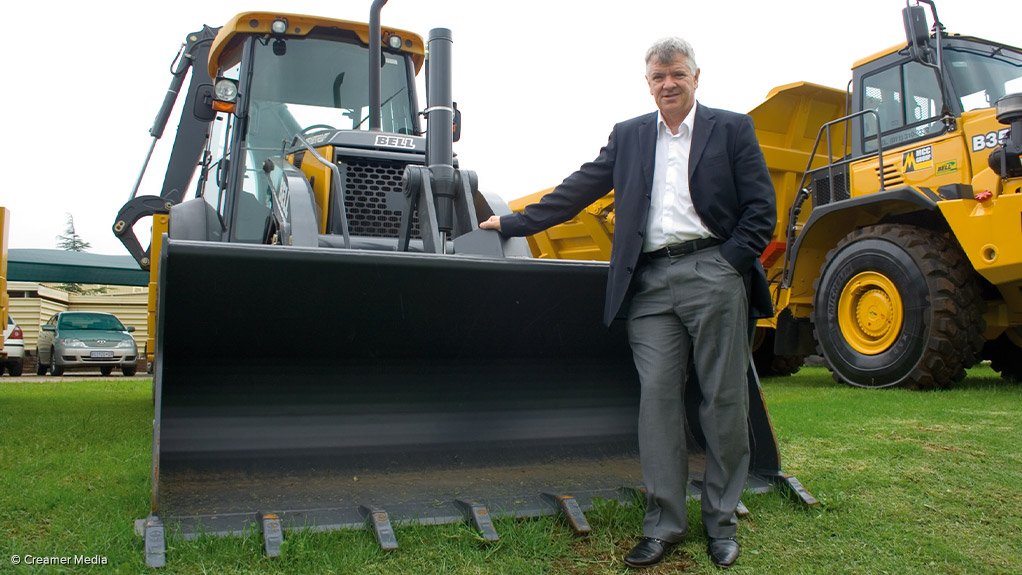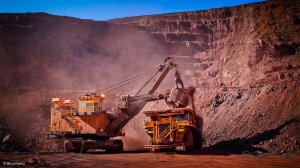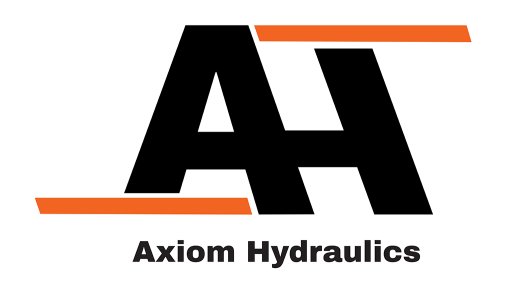Localisation seen as key to stimulating struggling capital equipment sector





AIMING LOCALThe SACEEC has embarked on an aggressive localisation drive, which will include the inaugural Local Southern African Manufacturing Expo
Photo by Bloomberg
GARY BELL There is a need to get the local industry more globally competitive
Photo by Creamer Media
ERIC BRUGGEMANSouth Africa has the capability to do a lot more, with the country’s export market a prime example
Photo by Creamer Media's Dylan Slater
The growth of the capital equipment sector, and the manufacturing sector in general, is being stifled by South Africa’s heavy reliance on imports, and its inability to deliver on its localisation promises.
The manufacturing sector has the potential to significantly accelerate South Africa’s economic growth and development; however, unnecessary imports, upwards of $88-billion for goods which are – or can be – supplied by local manufacturers, are costing South Africa innumerable jobs and much-needed economic momentum.
“We are actually in a bad recession. The stated 0.7% economic growth does not actually create jobs or bolster the economy,” says South African Capital Equipment Export Council (SACEEC) CEO Eric Bruggeman.
“We need to slow down the imports. We need to increase local content,” he told Engineering News, pointing out that this would bolster an embattled capital equipment industry facing limited new projects and fewer opportunities, as well as an economy that is home to significantly cash-strapped consumers.
The consumer has less cash, the unemployment rate is going up, retrenchments are increasing and companies are suspending operations for a few weeks at a time, owing to limited work. The only way to ease this is to stimulate localisation,” he warns.
He previously said that a 50% to 70% local content requirement for products would be considered acceptable to stimulate the future growth and sustainability of the local manufacturing sector.
While the shift from imports to the local manufacturing sector would result in short-term pain, owing to higher costs, the long-term gain would be the lifting of South Africa back onto its feet, eliminating R350-billion a year in unemployment costs and creating 1.3-million jobs.
This, in turn, would help lift the capital equipment sector out of the doldrums and place it on a more sustainable growth path.
“I understand you cannot make everything locally all of a sudden; however, this is money already being spent – it is just being spent in the wrong place.”
Regional Potential
Mining Equipment Manufacturers of South Africa (Memsa) CEO Dr Paul Jourdan says that about $2-billion worth of mining capital equipment, for example, is imported into South Africa each year, with the wider Southern African Development Community representing a further $2-billion yearly market, translating into a niche market larger than that of the European Union.
The import displacement represented an “enormous opportunity” for Memsa and the mining industry, he outlined in a presentation to an Industrial Development Corporation- (IDC-) hosted Mining Equipment Knowledge Café.
Memsa’s aim is to grow the local supply chain of capital equipment for the mining industry, with R8-million in support of this aspiration from the Department of Trade and Industry’s (DTI’s) Cluster Development Programme.
Bell Equipment chairperson Gary Bell believes that a more globally competitive local industry is required.
In an IDC presentation, he explained that, while it was extremely difficult to bed down accurate estimates, owing to the variables used in determining criteria and overlaps, the global construction machinery sector, in 2017, could be estimated at about $100-billion, while the mining plant and equipment sector was worth, depending on comparisons, an estimated $100-billion.
South Africa currently holds only a small slice of about 3%, or an estimated R85-billion, of Africa and the Middle East’s 6% consumption of the combined estimated $200-billion global market, but faces challenges such as fierce competition, limited barriers to entry, the threat of low-cost Asian products growth and difficulty in attracting other global players to localise unless incentivised, besides others.
He says the IDC’s discussions centre on answering questions such as how South Africa can increase its local production and encourage industry or the manufacturing sector to try to obtain a “bigger slice” of that market, which is dominated by imported goods.
During the recent launch of the Mandela Mining Precinct (MMP) and Memsa, Mineral Resources Minister Gwede Mantashe urged mining companies to source their equipment from local companies, as they were producing better equipment than their global counterparts.
While jobs were being shed in mining, more jobs could be created in associated sectors like the mining equipment manufacturing sector, he says.
“Our short-term goal is to increase local content, which will ultimately require a dedicated incentive, especially with regard to capital expenditure. This means we also have to increase factory-floor and manufacturing competitiveness, and look at innovation, technology, quality and pricing,” Jourdan adds.
“We have the capabilities in South Africa to do a lot more than what we are doing,” says Bruggeman, citing the success of the industry’s export markets.
The exports by SACEEC members are doing well, particularly to Russia, Canada, South America, Australia and America.
While exports to the rest of Africa are generally stagnant, with big projects and mine expansions across Zambia, Namibia and the Democratic Republic of Congo, besides others on hold or shuttered, there seems to have been a promising uptick in the second half of last year.
“We have to get the local industry more globally competitive,” says Bell, adding that local incentives or local tariff barriers will help the local market; however, it is ineffective for the export market.
There is a need to consider the cost of doing business and other major input costs and disadvantages, such as significant duty costs on required imported components and parts, which could be resolved through a tariff change.
Bell Equipment’s half-year report to June shows demand for equipment in the major global markets of Europe, the Americas and South-East Asia has increased.
“In Europe, our new products are doing well and will give us access to a wider customer and industry base, while the Americas offer good promise for the next few years, as mining, aggregates and construction, the main users of our articulated dump trucks, all continue to show good growth,” Bell CEO Leon Goosen said when the company released its results for the year to June.
He says that South-East Asia remains another focus market going forward, with Bell establishing a dealer network in Indonesia that has led to the positive market adoption of Bell products.
Bell adds that 70% of its business is in the international market.
Bruggeman believes a stronger local market is required and, along with the private sector, State-owned enterprises can assist through local procurement programmes.
“This is especially relevant, given the fact that local procurement specialists still insist on sourcing products from overseas when local alternatives have in fact proven to be superior in terms of both performance and reliability.”
The DTI has long punted localisation, with the tenth iteration of the Industrial Policy Action Plan (Ipap) highlighting that the establishment of specific conditions in the mining capital equipment sector can lead to a strong rebound in the development of much-needed mining research and development capabilities.
This programme ultimately led to the establishment of both the MMP and Memsa.
“If a supply chain is not localised, there will be no empowerment, no local job creation, no building of local industrial and technology capabilities and so forth,” Trade and Industry Minister Dr Rob Davies says.
Ipap aims to strengthen efforts to raise aggregate domestic demand through the localisation of public procurement and intensified efforts to persuade the private sector to support localisation and local supplier development, as well as step up South Africa’s export effort.
Local Manufacturing Conference
In line with this, the SACEEC has embarked on an aggressive localisation drive, which will include the inaugural Local Southern African Manufacturing Expo (LME), from May 21 to 23, at the Nasrec Expo Centre, in Johannesburg.
The aim is to drive inclusion for local manufacturers as part of both local and international supply chains, and the expo is endorsed by Gauteng Premier David Makhura.
“The expo will be the first exhibition to showcase locally manufactured equipment only to the international and local communities. We have already secured the participation of 35 countries,” says Bruggeman.
Cutting across a wide range of sectors, such as civils and construction, mining, agriculture, process industries and power and utilities, besides others, the exhibition’s objective is to demonstrate the power of local manufacturing as the key to unlocking vast economic empowerment, growth, development, job creation, export opportunities and investment.
In addition to the exhibition, the South African Institution for Mechanical Engineers will be hosting free-to-attend seminars, while the Artisan Training Institute is hosting a skills development zone.
“We are very excited about the [opportunity] the LME will provide for local manufacturers to market themselves to a captive extended audience.
“The show will provide a definitive platform to present, launch and showcase leading local manufacturing capabilities to a highly qualified and targeted audience of decision-makers with major purchasing power,” Bruggeman says.
Article Enquiry
Email Article
Save Article
Feedback
To advertise email advertising@creamermedia.co.za or click here
Comments
Press Office
Announcements
What's On
Subscribe to improve your user experience...
Option 1 (equivalent of R125 a month):
Receive a weekly copy of Creamer Media's Engineering News & Mining Weekly magazine
(print copy for those in South Africa and e-magazine for those outside of South Africa)
Receive daily email newsletters
Access to full search results
Access archive of magazine back copies
Access to Projects in Progress
Access to ONE Research Report of your choice in PDF format
Option 2 (equivalent of R375 a month):
All benefits from Option 1
PLUS
Access to Creamer Media's Research Channel Africa for ALL Research Reports, in PDF format, on various industrial and mining sectors
including Electricity; Water; Energy Transition; Hydrogen; Roads, Rail and Ports; Coal; Gold; Platinum; Battery Metals; etc.
Already a subscriber?
Forgotten your password?
Receive weekly copy of Creamer Media's Engineering News & Mining Weekly magazine (print copy for those in South Africa and e-magazine for those outside of South Africa)
➕
Recieve daily email newsletters
➕
Access to full search results
➕
Access archive of magazine back copies
➕
Access to Projects in Progress
➕
Access to ONE Research Report of your choice in PDF format
RESEARCH CHANNEL AFRICA
R4500 (equivalent of R375 a month)
SUBSCRIBEAll benefits from Option 1
➕
Access to Creamer Media's Research Channel Africa for ALL Research Reports on various industrial and mining sectors, in PDF format, including on:
Electricity
➕
Water
➕
Energy Transition
➕
Hydrogen
➕
Roads, Rail and Ports
➕
Coal
➕
Gold
➕
Platinum
➕
Battery Metals
➕
etc.
Receive all benefits from Option 1 or Option 2 delivered to numerous people at your company
➕
Multiple User names and Passwords for simultaneous log-ins
➕
Intranet integration access to all in your organisation


















